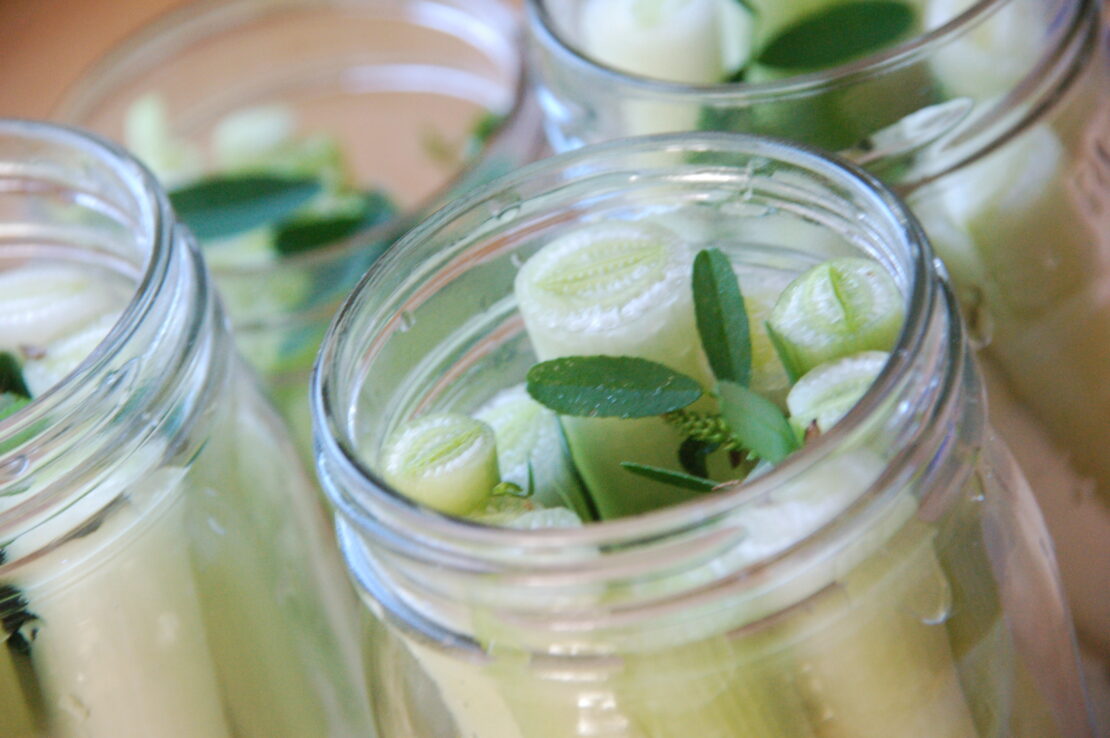
DIY Pickled Cattail Shoots
The following excerpt and Cattail Shoots recipe is from Pascal Baudar’s book Wildcrafted Vinegars: Making and Using Acetic Acid Ferments for Quick Pickles, Hot Sauces, Soups, Salad Dressings, Pastes, Mustards, and More (Chelsea Green Publishing, Oct 2022) and is reprinted with permission from the publisher.
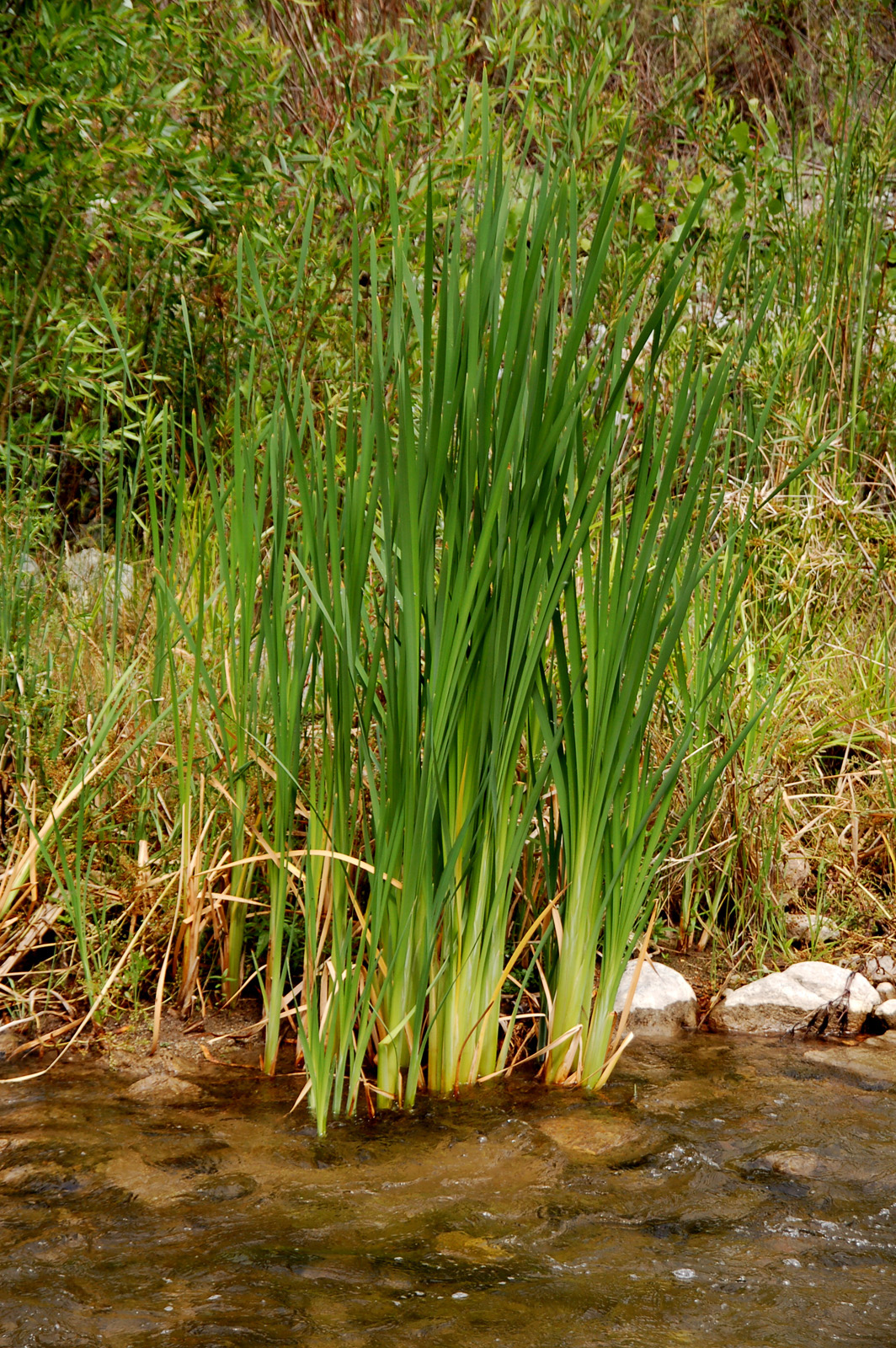
Cattail
Cattail loves wetland habitats, and it grows along the edges of lakes; in streams, marshes, and swamps; or in very wet soil. It is usually 5 to 8 feet (1.5 to 2.4 m) tall once mature. Cattail is easily recognizable with its stiff, flat leaf blades. In the center is an erect rounded stem that reaches up to 6 or 7 feet (1.8 to 2.1 m) in height. At the end of the stem, the flower head forms a cylinder that’s densely packed with tiny male flowers in the top cluster and tiny female flowers in the bottom cluster. When the male cluster is loaded with pollen it looks bright yellow. The pollen, which can be used as a flour substitute, is extremely easy to forage in large quantities.
Picked at the right time of the year, every part of the plant is edible. It has countless other uses, too. The long flat leaves can be made into hats, roofing, sandals, and woven baskets. The dried leaves can be twisted to make dolls and various children’s toys. I use the fibers to make cordage, as well. The seed hairs are fantastic tinder for starting fires. The crushed roots can be applied to burns, bruises, or cuts to promote healing and soothe pain.
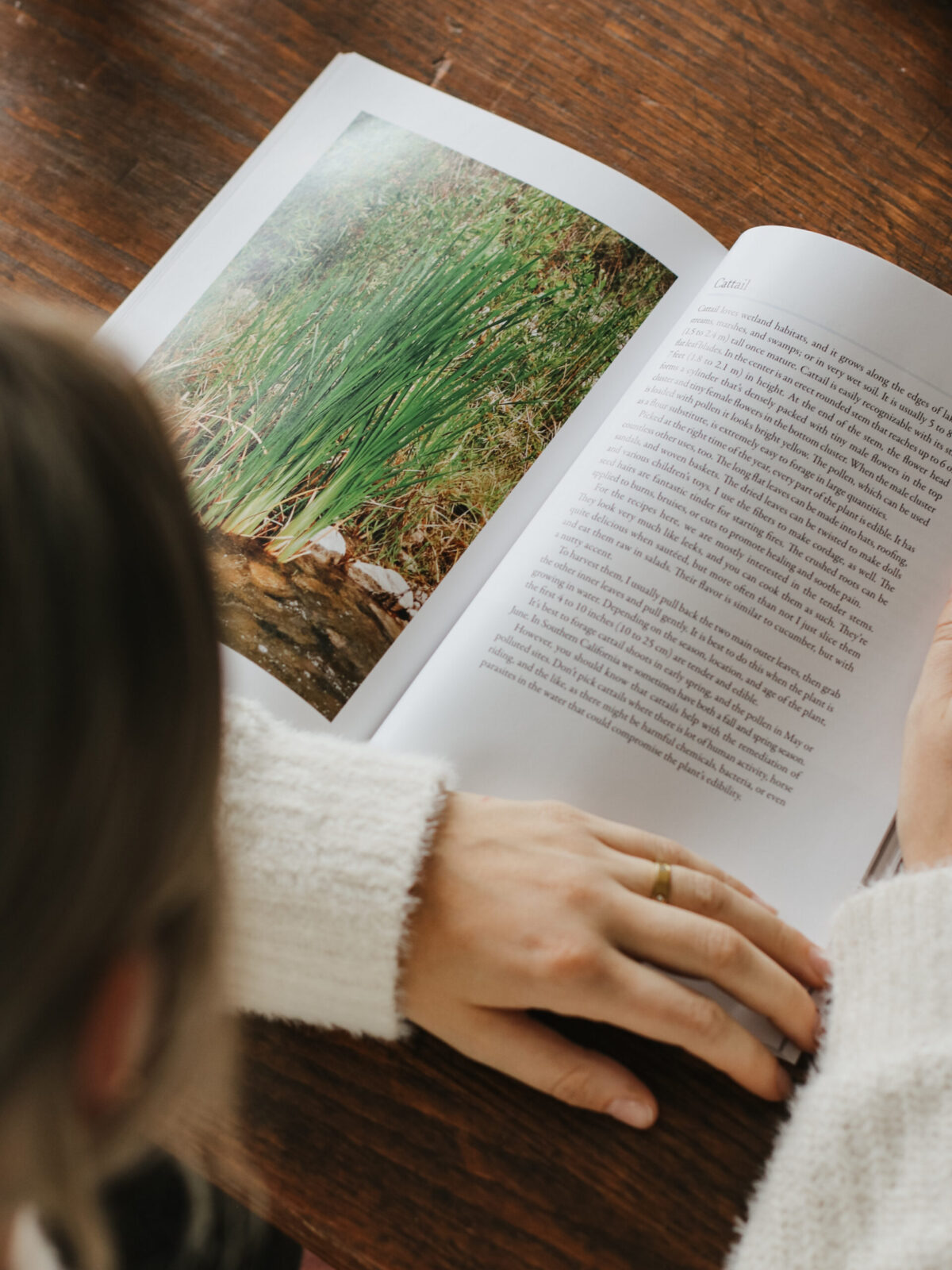
For the recipes here, we are mostly interested in the tender stems. They look very much like leeks, and you can cook them as such. They’re quite delicious when sautéed, but more often than not I just slice them and eat them raw in salads. Their flavor is similar to cucumber, but with a nutty accent.
To harvest them, I usually pull back the two main outer leaves, then grab the other inner leaves and pull gently. It is best to do this when the plant is growing in water. Depending on the season, location, and age of the plant, the first 4 to 10 inches (10 to 25 cm) are tender and edible.
It’s best to forage cattail shoots in early spring, and the pollen in May or June. In Southern California we sometimes have both a fall and spring season. However, you should know that cattails help with the remediation of polluted sites. Don’t pick cattails where there is lot of human activity, horse riding, and the like, as there might be harmful chemicals, bacteria, or even parasites in the water that could compromise the plant’s edibility.
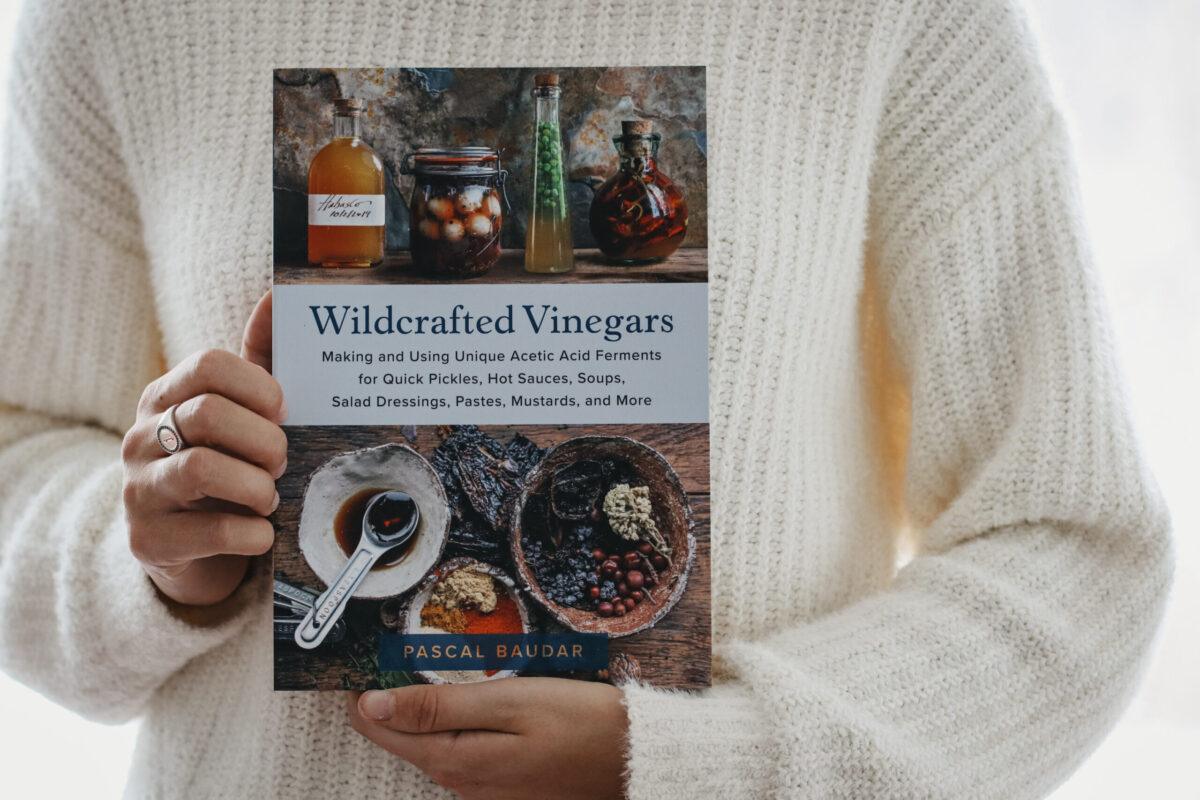
Pickled Cattail Shoots
This is a very basic recipe, but feel free to experiment with your favorite spices.
1-pint jar (1.9 L)
Around 20 medium cattail shoots
2 cups (480 ml) water or white wine
3 cups (720 ml) apple cider vinegar (5 percent acidity)
2 small chili pods (optional, but I like a little spicy kick)
2 teaspoons (10 ml) maple syrup, honey, or sugar
1⁄2 teaspoon (2.5 g) sea salt
11⁄2 teaspoons (4.5 g) pickling spices
1 sprig of sweet white clover or fresh dill
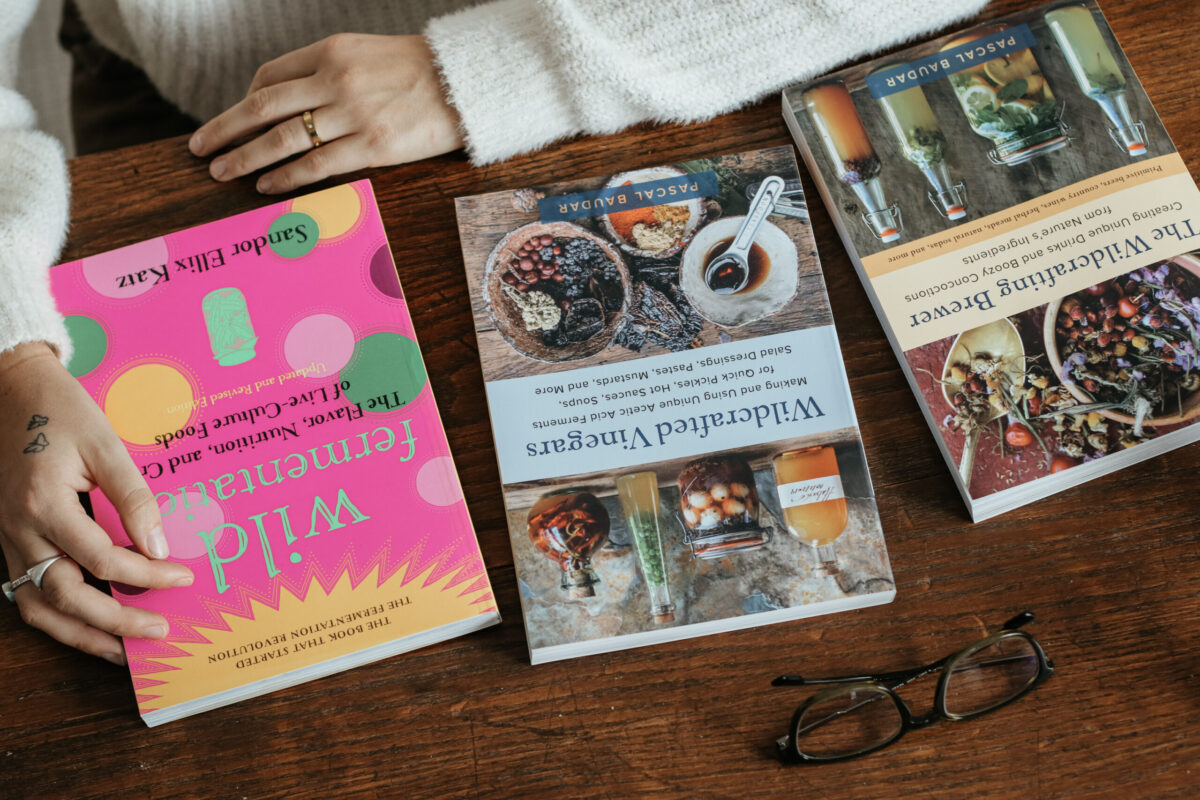
Sliced Cattail Shoot Quick Pickle
Here is a good example of using a homemade seasoned vinegar. It’s a simple quick pickle I made for one of my classes.
Cattail (Typha latifolia) can be found throughout the Northern Hemi- sphere. The plant loves water and grows in streams and wetland habitats. It’s usually 5 to 8 feet (1.5 to 2.4 m) tall once mature. It is easily recognizable with its stiff, flat leaf blades. In the center you will find an erect, rounded stem reaching up to 6 to 7 feet (1.8 to 2.1 m) in height. At the tip of the stem, the flower head forms a characteristic brown cylinder.
You want to forage cattail before it flowers, when the shoot is still very tender. The plant is usually 4 to 5 feet (1.2 to 1.5 m) tall at that stage. The bottom of the stem looks quite similar to a leek. To extract the shoot, my method is to push aside the largest two leaves, grab the inner part of the stem close to the ground or water, and pull gently. It should come up easily. Remove the top part (green leaves), as you’re mostly interested in the lower tender part.
Once home, thoroughly clean the collected shoots in cold water. Slice horizontally and remove the outside layers if they are a bit too tough or stringy, then vertically slice the tender shoot.
Sliced Cattail Shoot Quick Pickle
2 tablespoons (30 ml) Mugwort Beer Vinegar (or apple cider vinegar)
1 1⁄2 teaspoons (7.5 ml) maple syrup or honey
1⁄3 teaspoon (1.6 g) salt
4 ounces (120 g) sliced cattail shoots
1 tablespoon (3.5 g) chopped wild chervil (or substitute dill or parsley—dill is much better!)
2 tablespoons (30 ml) water
Get a copy of Pascal Bauder’s book, Wildcrafted Vinegars, via Chelsea Green Publishing here or on Amazon.

About the Author:
Pascal Baudar is the author of three previous books: Wildcrafted Fermentation (2020), The Wildcrafting Brewer (2018), and The New Wildcrafted Cuisine (2016). A self-described “culinary alchemist” he leads classes in traditional food preservation techniques. Through his business, Urban Outdoor Skills, he has introduced thousands of home cooks, celebrity chefs, and foodies to the flavors offered by their wild landscapes. In 2014, Baudar was named one of the most influential local tastemakers by Los Angeles Magazine.







